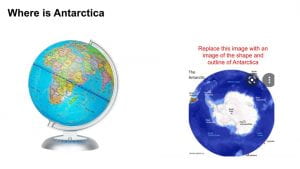Antarctic Animals – Questions
Please read the article on Antarctica here before answering the questions.
Emperor Penguins
1) What is the scientific name for Emperor Penguins?
→
2) The Emperor penguin is the Tallest&Heaviest of all penguins:
- a) Tallest b) Heaviest
- c) Smelliest d) a&b
Whales
3) What does the blue whale eat?
- a) Fish b) Krill
- c) Penguins d) a&b
4) How big can Blue Whales grow?
- a) 30m b) 3m
- c) 300mm d) 30cm
Seals
5) What do the Fur seals eat?
→ Fish jellyfish and krill
Leopard Seals
6) What is the scientific name for Leopard seals
→ Hydrurga leptonyx
7) How much time do they spend in the ocean?
→ 80%
No Wolves or Polar bears?
8) Wolves and Polar bears live in the?
- a) South Pole b) North Pole
- c) Parakai d) a&b


